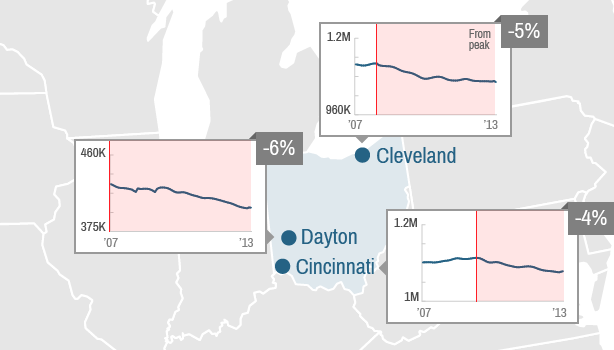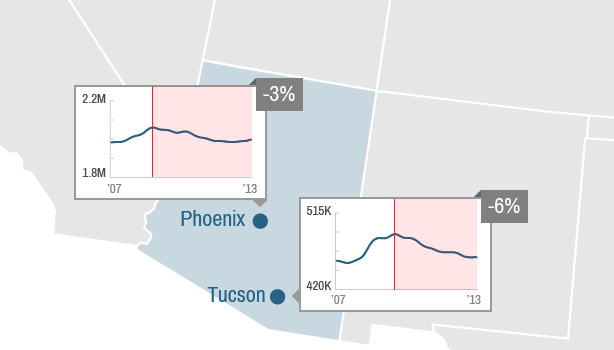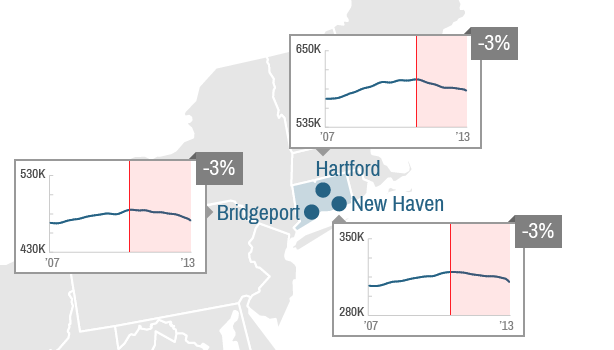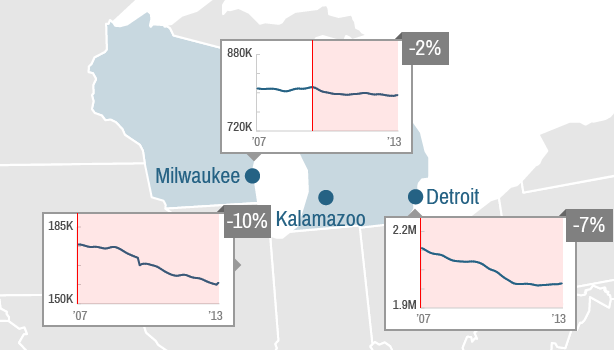Search News

The labor force has been shrinking in all of Ohio's major cities other than its state capital, Columbus.
Cleveland has lost 52,000 workers, or about 5% of its labor force, since November 2007, and Cincinnati lost 39,000 workers, or about 4% of its labor force, since May 2009, according to U.S. Bureau of Labor Statistics data. Job growth is anemic, particularly in Ohio's main industry, manufacturing. Signs point to workers giving up, said Amy Hanauer, executive director of Policy Matters Ohio.
"I think people are getting discouraged and leaving the labor market," she said.
Ohio lost 388,000 jobs in the financial crisis, and has since gained only about a fifth of them back.

The fallout from the housing bust is still felt here. The construction sector slashed more than half its jobs in the crisis, and they've only started to trickle back in the last few months.
But the decline in the labor force isn't solely due to construction. In neighboring Nevada, the heart of the housing bust, the labor force didn't drop nearly as dramatically as in Arizona.
Phoenix alone lost 64,000 workers, or 3% of its labor force, and Tucson lost 29,000 workers, or a 6% of its labor force, over the last four years.
Most of those declines have come from young men, ages 25 to 34, and middle-aged women, ages 45 to 59.
The Latino labor force has also declined, which could be due in part to stricter immigration laws.

Like much of New England, Connecticut generally has an older population than the nation as a whole. With the stock market improving since the recession ended, the number of Baby Boomers retiring has been increasing, said Alissa DeJonge, director of research at the Connecticut Economic Resource Center.
At the same time, the unemployment rate among young minorities has climbed in the state's urban centers, such as Hartford and Bridgeport.
"It may be that these younger minority workers have stopped looking for work and will reenter the labor force when the state's economy improves," said Orlando Rodriguez, senior policy fellow at Connecticut Voices for Children.

Michigan's population was declining three years before the recession even hit, as the auto industry moved jobs elsewhere.
The state's largest city, Detroit was hit particularly hard. Three years ago, the U.S. Census found that the city's population had fallen to its lowest level since 1910.
Other manufacturing cities in the Midwest are facing similar declines.
Milwaukee lost 16,000 workers, or 2% of its labor force since June 2009. And Kalamazoo lost 17,500 workers -- a whopping 10% of its labor force -- since January 2007. ![]()